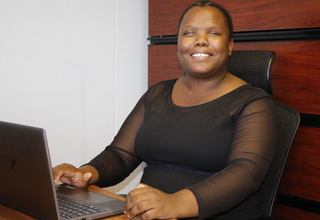Sexual and reproductive health and rights (SRHR) are the cornerstone to the ability of many people to realize their human rights and achieve their full potential. Unintended pregnancy and childbearing, disease, abuse and other violations of SRHR can profoundly alter young people's lives by undermining their educational attainment, economic opportunities and ability to participate in public and political life.
Ensuring that young people are empowered to access their SRHR across the East and Southern Africa (ESA) region has been established as a regional priority through the ESA Ministerial Commitment, and other rights and development frameworks. However, young people with disabilities face particular challenges in accessing SRHR.
This Regional Strategic Guidance is intended to highlight their particular barriers and bring together recommendations to help ensure, in keeping with the Sustainable Development Goals, that “no one is left behind” in efforts to improve outcomes for young people in the region.
The Regional Strategic Guidance is intended to be used by governments, regional economic communities, civil society and other stakeholders as a guide to planning, programming and resourcing efforts to achieve improved access to SRHR by young people with disabilities. While each country has its own unique context, strengths and challenges, a number of common themes were identified across the region in terms of key challenges, promising practices and recommendations for the way forward. The Regional Strategic Guidance is intended to provide a starting point for each country to develop a national plan of action, guided by the findings of the Situational Analysis and the recommendations of the proposed Regional Strategic Guidance.
The situational analysis was used to inform the development of the guidance and can be used as a source of information thereafter, during the implementation of the Guidance. The purpose of the situational analysis is to:
• Provide insight into the current situation of young people with disabilities and their access to SRHR in the region; including the legislative environment in which they exist and how it supports or hinders this;
• Document existing efforts to address access to SRHR by young people with disabilities, including through comprehensive sexuality education (CSE) and social and behaviour change communication (SBCC); the organizations leading these efforts, relevant materials and as evidence of best practices;
• Identify research priorities to inform the regional guidance;
• Make recommendations for the development of the regional guidance.
Young people with disabilities have been consulted throughout the development of this document, in keeping with the guiding principle for planning services for them: “nothing about us, without us”.
The Guidance is based on a theory of change that intends to achieve a vision for the region, where young people with disabilities are empowered to access sexual and reproductive health services. They enjoy their sexual and reproductive rights, with increased agency and autonomy, reducing vulnerability and risk.




